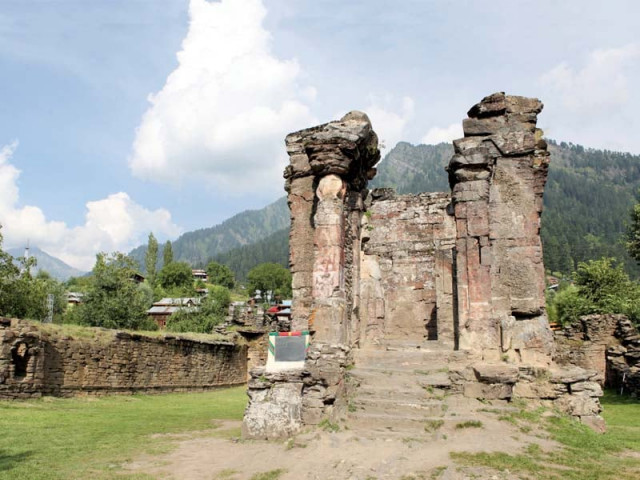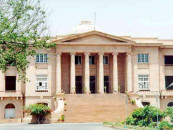Steeped in history: Centre of Hindu, Buddhist learning lies hidden in Neelum
Sharda Peeth was one of the most important seats of learning and mysticism in South Asia

Sharda Peeth, commonly known as the University of Sharda, is approximately 50 miles from Muzaffarabad. PHOTOS: HUMA CHOUDHARY/EXPRESS
Located on the banks of Neelum River, Sharda Peeth, commonly known as the University of Sharda, is approximately 50 miles from Muzaffarabad, Azad Jammu and Kashmir. This lost treasure is often overshadowed by the awe-inspiring beauty of Neelum Valley and therefore often overlooked by tourists.

After arriving in the temple’s courtyard, imagination immediately takes a flight back by two millennia. Once can visualise groups of monks draped in saffron robes; some meditating while others deeply engrossed in ancient scrolls, and engaged in animated debate about the purpose of life.
Sharda Peeth was one of the most important seats of learning and mysticism in South Asia during its heyday, where besides religion, philosophy, contemporary literature, along with astronomy and logic were taught by monks who had spent their lives in scholastic pursuits.
The empty arches in all four corners of the courtyard must have housed beautiful statues of Buddha and other deities. In the centre lies the main structure which once sheltered Sarasvati, the Hindu goddess of knowledge, music, arts, wisdom and learning, and is carved out of a rare wood found deep in the dense pine forests of Kashmir. Sharda Peeth’s marvelously unique architecture, despite being in a dilapidated condition, baffles even modern engineers.

A much frequented centre of Hinduism and Buddhism back in the day, the temple had its own script which was used as the medium of instruction. Kashmiri Hindus, especially pundits, remain highly devoted to this temple to-date and pray to it for the charity of knowledge.
Some renowned historians and philosophers from the past have traveled great distances to pay pilgrimage and access Sharda library’s manuscripts. Locals from the area often share stories of a young Hindu knowledge-seeker from Indian Gujrat, Hema Chandra, who spent time at the library in order to compile an encyclopedia of ancient languages, religions and literature.
Another Muslim historian, Al Biruni, visited India in 1030 and has mentioned Sharda Peeth in his book titled “Kitabul Hind.” He was, however, unable to reach the temple since the roads were snowbound during his visit.
Maybe Sharda Peeth’s proximity to the Line of Control is what has caused it to be overlooked in terms of tourism. This important landmark is in ruins today due to lack of maintenance and is in urgent need of restoration after being severely damaged by the 2005 earthquake. Once renovated, this temple bears great potential for cultural and faith-based local as well as international tourists to come and visit.
Published in The Express Tribune, September 6th, 2015.


















COMMENTS
Comments are moderated and generally will be posted if they are on-topic and not abusive.
For more information, please see our Comments FAQ